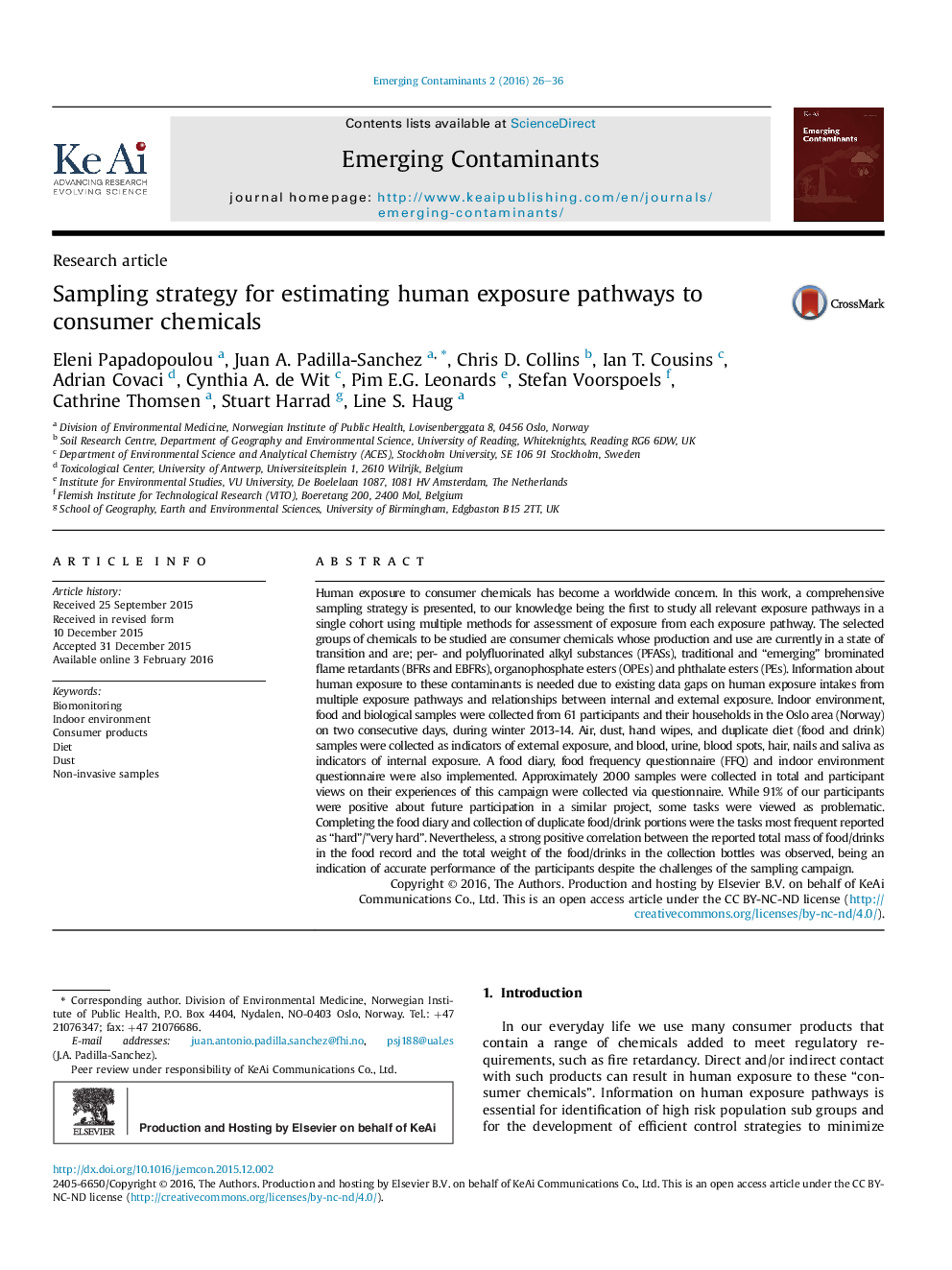| کد مقاله | کد نشریه | سال انتشار | مقاله انگلیسی | نسخه تمام متن |
|---|---|---|---|---|
| 4422637 | 1308753 | 2016 | 11 صفحه PDF | دانلود رایگان |
Human exposure to consumer chemicals has become a worldwide concern. In this work, a comprehensive sampling strategy is presented, to our knowledge being the first to study all relevant exposure pathways in a single cohort using multiple methods for assessment of exposure from each exposure pathway. The selected groups of chemicals to be studied are consumer chemicals whose production and use are currently in a state of transition and are; per- and polyfluorinated alkyl substances (PFASs), traditional and “emerging” brominated flame retardants (BFRs and EBFRs), organophosphate esters (OPEs) and phthalate esters (PEs). Information about human exposure to these contaminants is needed due to existing data gaps on human exposure intakes from multiple exposure pathways and relationships between internal and external exposure. Indoor environment, food and biological samples were collected from 61 participants and their households in the Oslo area (Norway) on two consecutive days, during winter 2013-14. Air, dust, hand wipes, and duplicate diet (food and drink) samples were collected as indicators of external exposure, and blood, urine, blood spots, hair, nails and saliva as indicators of internal exposure. A food diary, food frequency questionnaire (FFQ) and indoor environment questionnaire were also implemented. Approximately 2000 samples were collected in total and participant views on their experiences of this campaign were collected via questionnaire. While 91% of our participants were positive about future participation in a similar project, some tasks were viewed as problematic. Completing the food diary and collection of duplicate food/drink portions were the tasks most frequent reported as “hard”/”very hard”. Nevertheless, a strong positive correlation between the reported total mass of food/drinks in the food record and the total weight of the food/drinks in the collection bottles was observed, being an indication of accurate performance of the participants despite the challenges of the sampling campaign.
Journal: Emerging Contaminants - Volume 2, Issue 1, March 2016, Pages 26–36
